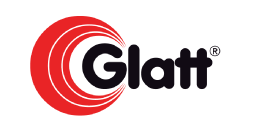Timelines 2018
With regards to timelines, the key milestone is ICDRA 2018 (7-8 September 2018), where we hope to have an industry session at pre-ICDRA and/or have WHO present the CTD proposal at ICDRA to the attending regulators. As such, in order to have the data in a format we can share the group must have an agreement on the first draft of the proposal by end-April, and by end-May agree on a draft aimed at sharing with WHO.
Options for currently submitted paper
The first paper, submitted to Vaccine as a meeting report last October, has not been published yet; issues with the ASEAN data have also been identified. As such, for the proposals paper the following options can be considered:
- If first paper is rejected (Q1 2018): a full peer-reviewed article, combining the data from the two papers, should be the objective as it would be more impactful and to gain more traction. That would entail correcting the ASEAN data and include the proposals as well as the case studies, and resubmit as a full paper to Vaccine (or other, such as PLOS) by summer 2018. Publication would hardly be out before 2019 (assuming publication in Vaccine – could be easier with another journal). Nevertheless, we cannot resubmit as meeting report as it has been too long (May 2016).
- If first paper is accepted and published (Q1 2018): in case the first paper is accepted conditionally (upon correction of ASEAN data), objective is to have it published as meeting report with the corrected data by Q2 2018. In parallel, we would submit the proposals paper as a full peer-reviewed article (final draft by June 2018) to Vaccine, for consistency’s sake. Publication will hardly be out before 2019.
We would then seek opportunities to amplify the publication in the following for a:
- Press release
- RAPS
- Pink Sheet[[Pink Sheet is a pharma news website, well recognized for vaccines, they also do interviews. Access rare from developing countries regulators to those media: might be low, but at least we have companies getting the info. Regulators would be more targeted at ICDRA.]]
- Conferences (DCVMN/IFPMA presenters)
Stakeholder Engagement
WHO
WHO has already shown high interest during an informal meeting aimed at introducing them the first paper’s results. Next objective would be to persuade them to present the data at ICDRA. Potentially we could also aim at persuading WHO to publish a guideline on the CTD, which would have the advantage of giving our proposal a “WHO stamp”, and possibly promoting its use among Gavi and Gavi-graduating countries. Main disadvantages would be that by the time we have this it will be 3-4 years, and potential loss of control over the content (e.g. WHO interprets the data in a different way and develops guidelines that do not address our concerns). Need to question whether we need a guideline, or just have WHO to organize meeting and workshops and engage regions such as ASEAN. Risk exists that enforceability of it would be even more reduced versus developing a guideline.
ICH
A better understanding of the leveraging power of ICH is needed; they could be potentially useful in interacting with ASEAN? Enforcement power would be limited though.
PAHO
PIC/S
While trying to enforce at regulator level is important, political/legislative enforcement is also needed and arguably more important as if legislation needs changing, this will not be in the scope of a NRA. Those are the stakeholders could influence this process:
- World Bank
- Gavi
- BMGF
- MSF
- EU – influencing level is broader than just EU
- Path
A potential selling point to those stakeholders could be cost ($$) of this problem and how much could be saved by tackling it; although we discussed it as maybe not worth it, those politicians listen to money. We could somehow paint a broad cost picture of how much this issue costs, not only in financial terms but in delays to access, morbidity and mortality.
MRP – mutual recognition procedures
- Between and within economical Block
- ASEAN
- GCC
- SAARC
- ZaZiBoNa…
Mutual recognition between blocks of countries is more in theory but does not translate into practice. Lack of political will and other geo-political factors disallow this useful procedure. I would recommend for arguments and line of thinking to have a look at the recent EFPIA white paper on reliance and expedited pathways
Quantum leap NRA
Countries need to establish regulatory procedures, with a need for a stepwise approach, ideally with country specialization on key areas (e.g. ensuring that Good distribution practices are being followed in the in-country supply chain, ensuring that a pharmacovigilance system is in place or that there is a means to access PV data from other relevant sources).
- Capacity building – numbers of staff – training programs
- Capability – training – experience building on medicines AND vaccines and other product ranges
- Realistic ambition
- Incremental improvement –stepwise building









